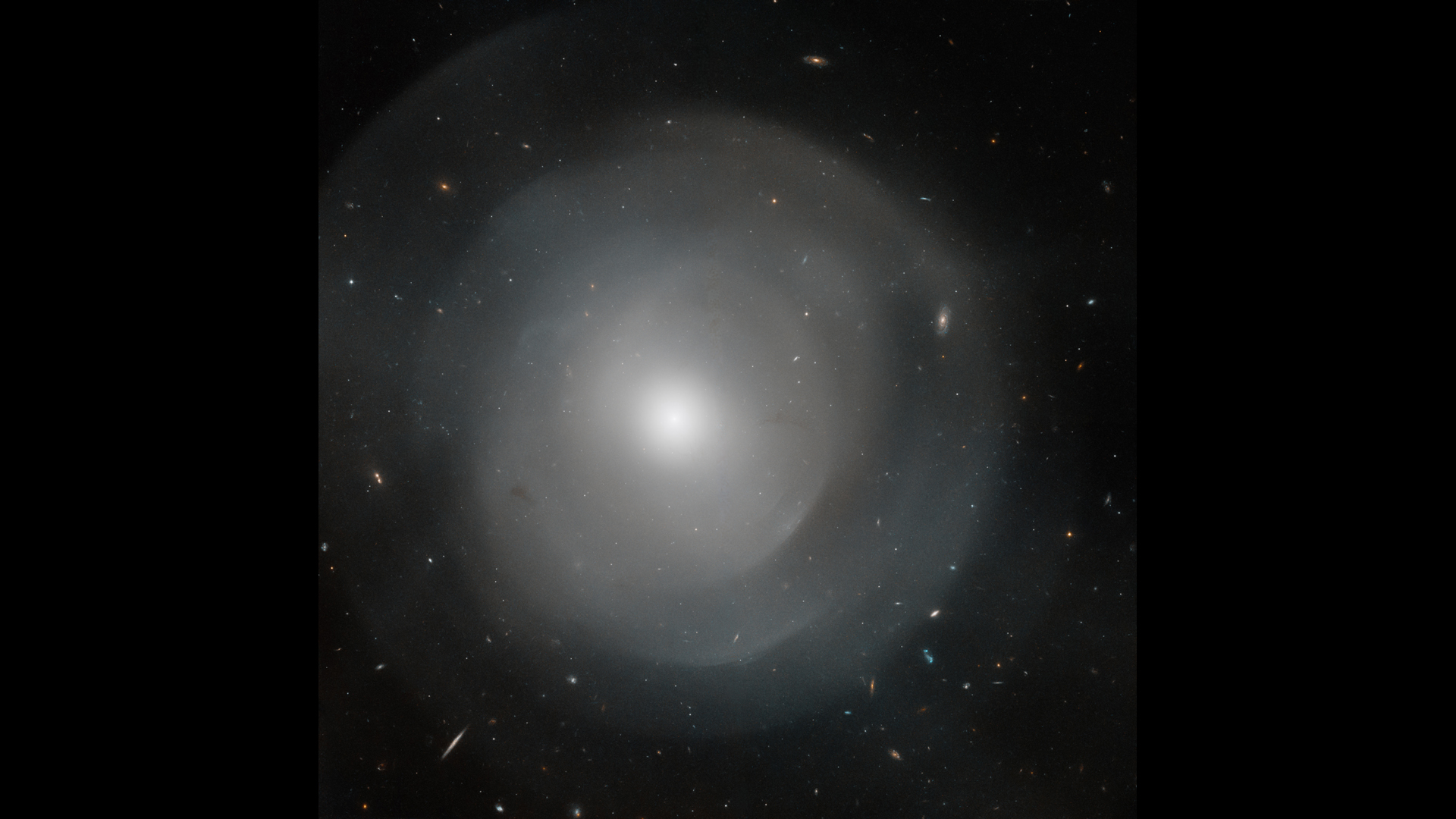Hubble telescope spots enormous elliptical galaxy surrounded by mysterious shells

The Hubble Space Telescope has captured a stunning new view of a gigantic galaxy that is more than twice the size of the Milky Way.
The elliptical galaxy, known as NGC 474, is located approximately 100 million light-years from Earth. The Hubble telescope captured an up-close view of the central region of the galaxy, revealing its enormous size.
Measuring roughly 250,000 light-years across, NGC 474 is 2.5 times larger than our own galaxy, the Milky Way. But the size of NGC 474 is not its only unique feature, according to a statement from NASA, which released the new image May 18.
Related: The best Hubble Space Telescope images of all time!
The recent Hubble observations show that NGC 474 has a series of complex layered shells that surround its spherical core. Although the source of these shells is unknown, they may be the result of a galactic merger in which NGC 474 absorbed one or more smaller galaxies, according to the statement.
During a galactic merger, the absorbed galaxy could create waves, forming the layered shells observed in NGC 474. This process is similar to how a pebble dropped in water creates ripples.
"About 10% of elliptical galaxies have shell structures, but unlike the majority of elliptical galaxies, which are associated with galaxy clusters, shelled ellipticals usually lie in relatively empty space," NASA officials said in the statement. "It may be that they've cannibalized their neighbors."
Get the Space.com Newsletter
Breaking space news, the latest updates on rocket launches, skywatching events and more!
The new image of NGC 474 was taken using Hubble's Advanced Camera for Surveys. Researchers also used data from Hubble's Wide Field and Planetary Camera 2 and Wide Field Camera 3 to get a comprehensive view of the massive galaxy.
Follow Samantha Mathewson @Sam_Ashley13. Follow us on Twitter @Spacedotcom and on Facebook.
Join our Space Forums to keep talking space on the latest missions, night sky and more! And if you have a news tip, correction or comment, let us know at: community@space.com.

Samantha Mathewson joined Space.com as an intern in the summer of 2016. She received a B.A. in Journalism and Environmental Science at the University of New Haven, in Connecticut. Previously, her work has been published in Nature World News. When not writing or reading about science, Samantha enjoys traveling to new places and taking photos! You can follow her on Twitter @Sam_Ashley13.









